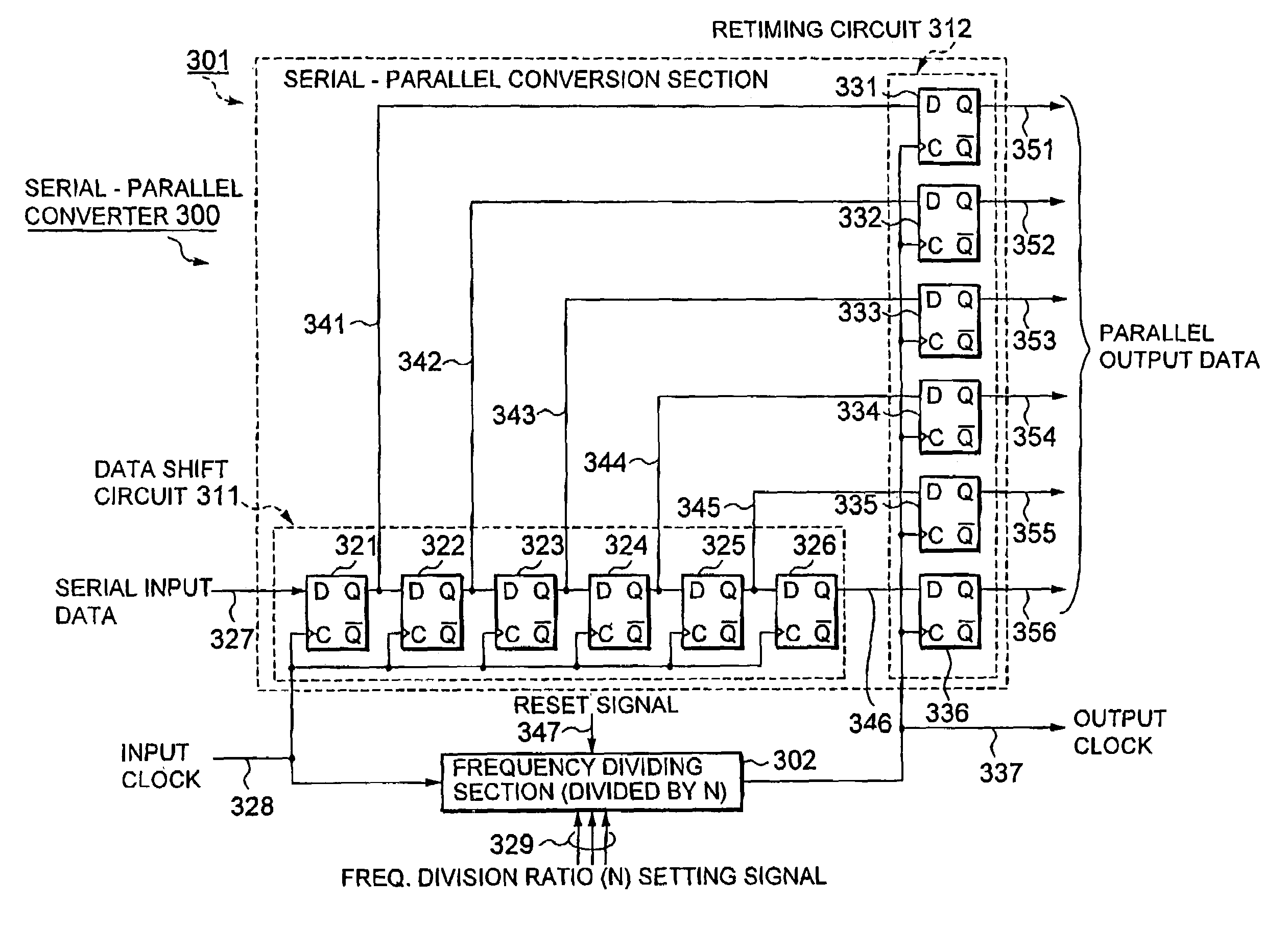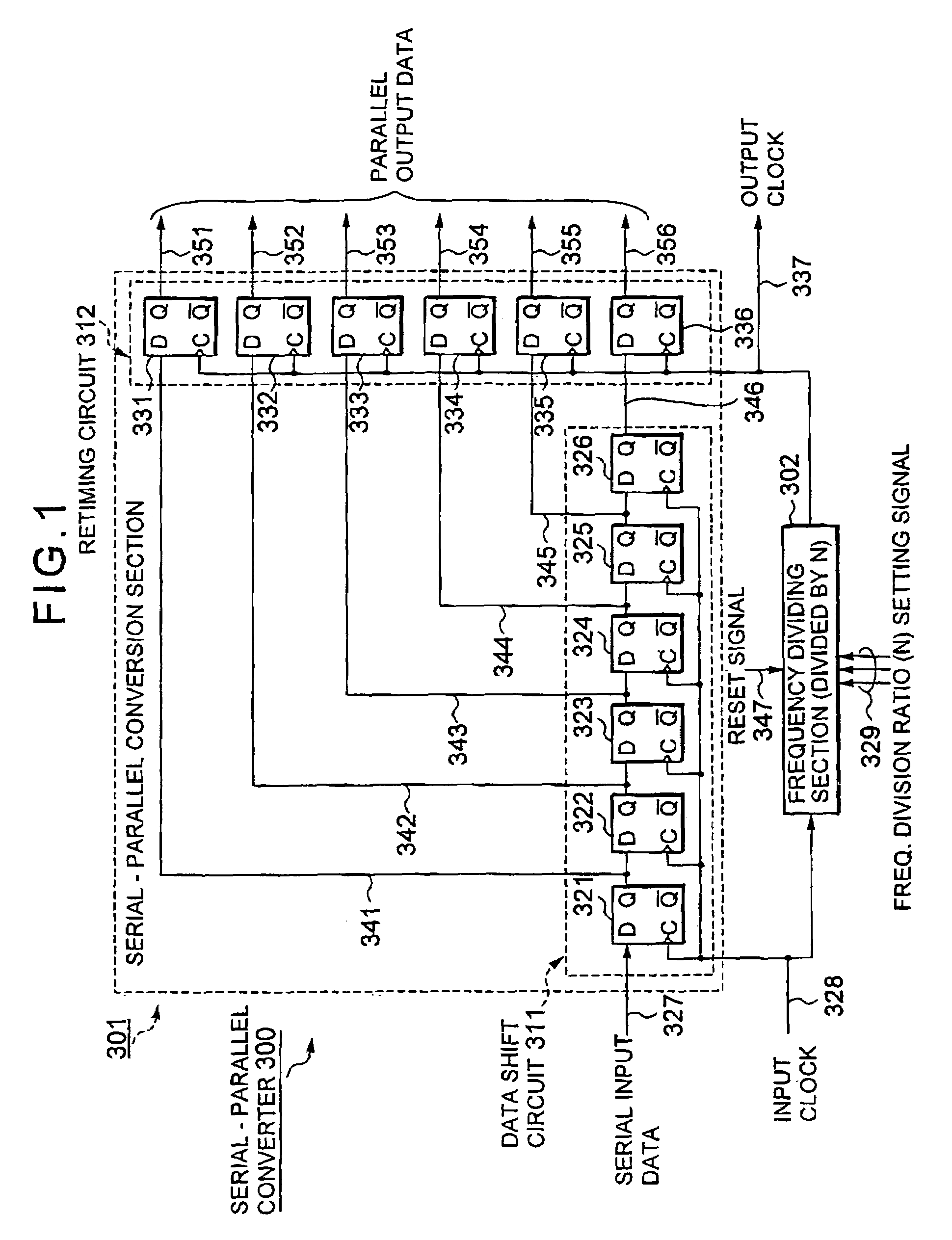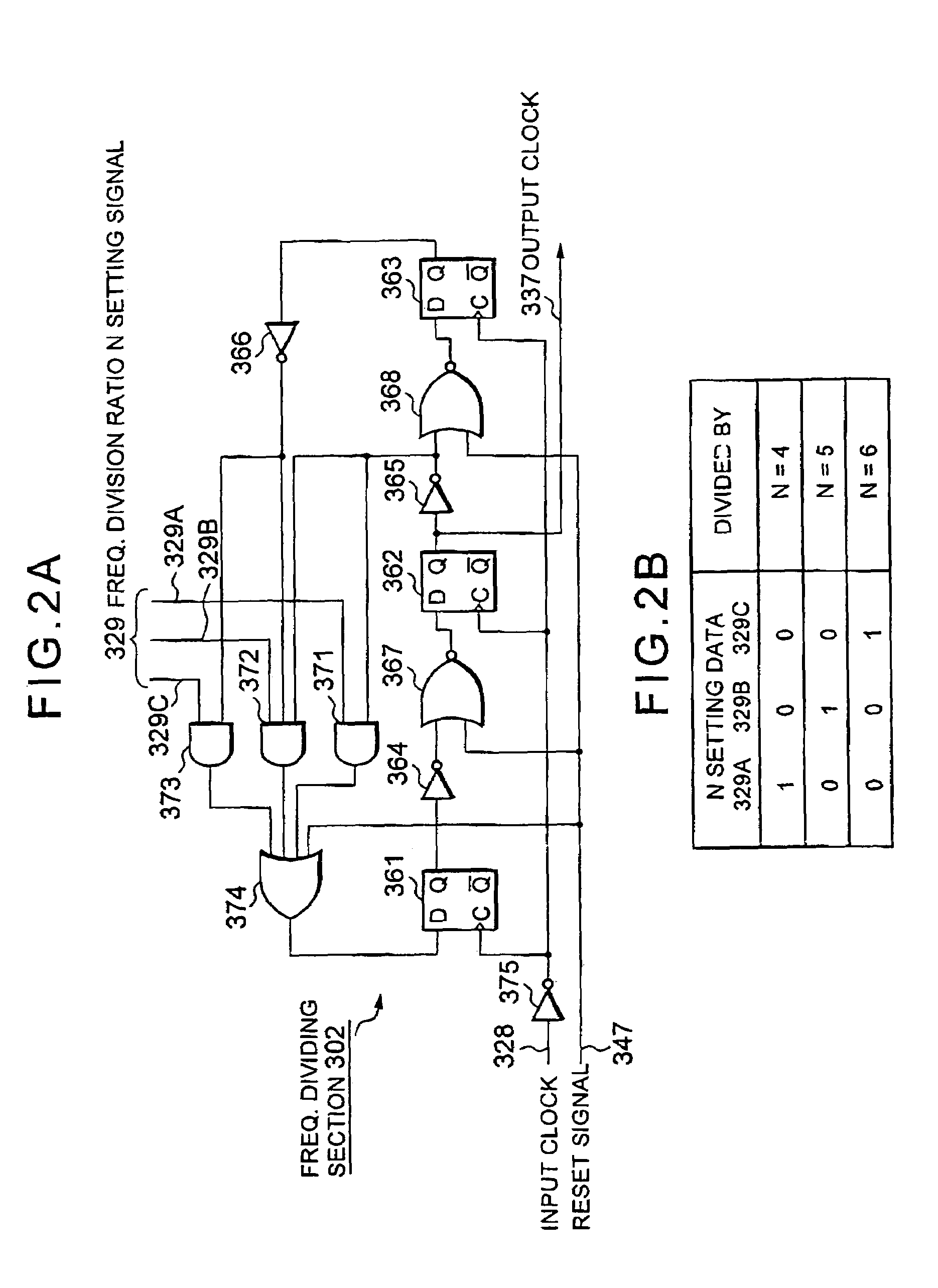Data form converter between serial and parallel
- Summary
- Abstract
- Description
- Claims
- Application Information
AI Technical Summary
Benefits of technology
Problems solved by technology
Method used
Image
Examples
first embodiment
1. First Embodiment
[0046]1.1) Circuit Structure
[0047]Referring to FIG. 1, a serial-parallel converter 300 according to a first embodiment of the present invention includes a serial-parallel conversion section 301 and a frequency dividing section 302. The serial-parallel conversion section 301 is comprised of a data shift circuit 311 and a retiming circuit 312. The data shift circuit 311 includes first to sixth flip-flop circuits 321–326 that are connected in a cascade connection, and sequentially shifts serial input data 327 received at a data input terminal D of the first flip-flop circuit 321 according to an input clock 328. The input clock 328 is also supplied to the frequency dividing section 302. A frequency-division ratio of the frequency dividing section 302 can be set to a selected one (N) of various frequency-division ratios depending on a frequency-division ratio setting signal 329.
[0048]The retiming circuit 312 includes first to sixth flip-flop circuits 331–336, each of w...
second embodiment
2. Second Embodiment
[0081]2.1) Circuit Structure
[0082]Referring to FIG. 10, a serial-parallel converter 400 according to a second embodiment of the present invention includes a 1:2 serial-parallel conversion section 401, a first serial-parallel conversion section 411, a second serial-parallel conversion section 412, and a frequency dividing section 413. Each of the serial-parallel conversion sections 411 and 412 has the same circuit structure as that of the serial-parallel conversion section 301 as shown in FIG. 1. Accordingly, the data shift circuit 311 and the retiming circuit 312 are depicted by dashed lines in each of the serial-parallel conversion sections 411 and 412. The frequency dividing section 413 also has the same circuit structure as that of the frequency dividing section 302 as shown in FIG. 1.
[0083]In such a circuit as shown in FIG. 10, the input data 327 and the input clock 328 are first input to the 1:2 serial-parallel conversion section 401. The 1:2 serial-parallel...
third embodiment
3. Third Embodiment
[0099]3.1) Outline of Circuit
[0100]Referring to FIG. 13, a parallel-serial converter 500 according to a third embodiment of the present invention includes a parallel-serial conversion section 501 and a frequency dividing section 502. As the frequency dividing section 502, the frequency dividing section 302 or 302A shown in FIG. 2 or 3 in the first example may be used. An input clock 503 is supplied to both the frequency dividing section 502 and the parallel-serial conversion section 501. When a reset signal 504, which corresponds to the reset signal 347 in FIG. 1, is changed from “1” to “0,” the frequency dividing section 502 starts frequency division of the input clock 503 (see the input clock. 328 shown in FIGS. 4(b), 5(b), and 6(b)), thereby outputting a frequency-divided clock 505 (corresponding to the output clock 337 of the first example shown in FIGS. 4(d), 5(d), and 6(d)). The frequency-divided clock 505 is then supplied to the parallel-serial conversion s...
PUM
 Login to View More
Login to View More Abstract
Description
Claims
Application Information
 Login to View More
Login to View More - R&D
- Intellectual Property
- Life Sciences
- Materials
- Tech Scout
- Unparalleled Data Quality
- Higher Quality Content
- 60% Fewer Hallucinations
Browse by: Latest US Patents, China's latest patents, Technical Efficacy Thesaurus, Application Domain, Technology Topic, Popular Technical Reports.
© 2025 PatSnap. All rights reserved.Legal|Privacy policy|Modern Slavery Act Transparency Statement|Sitemap|About US| Contact US: help@patsnap.com



